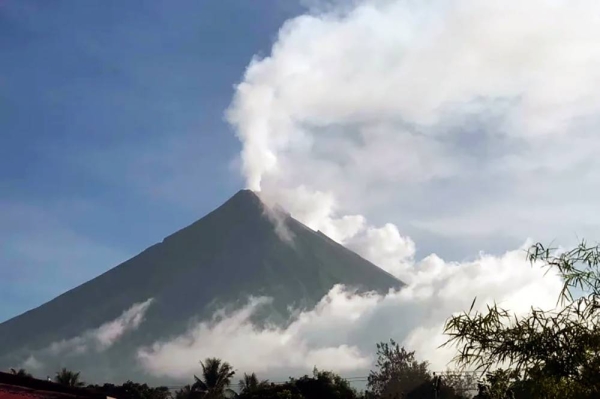
A small but restive volcano south of the Philippine capital spewed a 1.5 kilometer (0.9 miles) plume on Saturday, prompting authorities to raise an alert level and evacuate more than a thousand residents.
The alert for the Taal volcano, about 70 km (45 miles) south of central Manila, was increased to level 3 from level 2 on the 5-level scale, which the seismology and volcanology agency said meant "there is magmatic intrusion at the main crater that may further drive succeeding eruptions".
"Magma in the shallow part of the crater interacted with water, causing an eruption called phreatomagmatic activity," Renato Solidum, head volcanology agency, told DZMM radio station.
But Solidum said activity would not be as explosive as the January 2020 eruption and that ash fall could be limited to communities within the volcano, which sits in the middle of a lake.
Authorities evacuated more than 1,100 persons living in lakeside communities near the volcano, the disaster agency said. The evacuees include fishermen and fish cage workers in the lake.
Taal is one of the world"s smallest active volcanoes. Despite standing at only 311 meters (1,020 feet), it can be deadly and an eruption in 1911 killed more than 1,300 people.
In January 2020, Taal shot a column of ash and steam as high as 15 km, which forced more than 100,000 people to evacuate while dozens of flights were canceled.
Heavy charcoal-like ash rained down on towns and villages, blanketing everything. Houses and trees buckled under the weight of it. Affected areas had no power or fresh water.
In July last year, authorities once again evacuated thousands after Taal spewed a 1 km (0.6 miles) high plume of gas and steam.
Taal Volcano sits on the Ring of Fire — a horse shoe shaped belt in the Pacific Ocean basin where most of the world"s active volcanoes lie. It"s also where 90% of earthquakes happen as tectonic plates push against each other, causing tremors.
The “ring” stretches along a 25,000-mile (40,000-kilometer) arc from the boundary of the Pacific Plate, to smaller plates such as the Philippine Sea plate, to the Cocos and Nazca Plates that line the edge of the Pacific Ocean. — CNN












